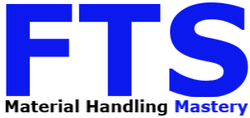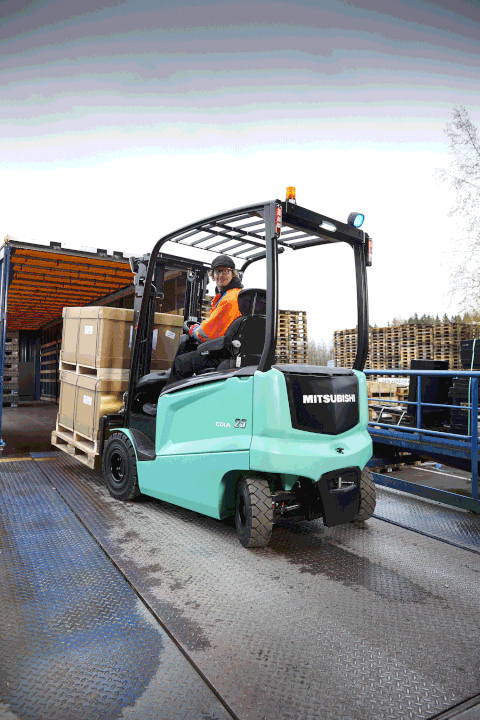
Sign #1: Operators Care More About What Someone Sees, Rather Than What Could Actually Happen
Virtually everyone knows that wearing a seatbelt on a forklift is required by law. Most operators know that if they get caught without a seatbelt by OSHA, the company they work for will receive heavy fines. However, I find that most operators do their best to not wear the available seatbelt. In most of my classes, when I talk about the #1 cause of death and how it can be avoided, I can tell 90% of those candidates have not been taking seatbelts seriously. Why would they? Up to that point, the seatbelt was just a legal requirement, not a lifesaving device. As with many other violations, operators typically know they are supposed to wear the belt, but do not because they don’t understand the physical risk of not wearing it.
“Forgetting” the restraint is just the beginning of the giveaways and possibly not even the most obvious. Other things like turning while on ramps, carrying loads with the forks raised, and making fast turns are signs that operators are not managing the stability of the forklift. Lack of stability management is not only the primary cause of forklifts rolling over, but also indicates a lack of awareness of the actual danger. The lack of physical hazard focus, in regard to stability, causes operators to do things that increase the chances of a rollover, which exponentiates the chances of a very costly accident happening. Remember, rollover is the #1 cause of death among forklift accidents, and the mindset is there because of what has been taught.
Sign #2: They’re Completely Numb to the Pedestrians Around Them
Given that many of the injuries that occur from lift trucks are incurred by pedestrians, and the most common type and size forklift in the workplace weighs 9000lbs, that no one in their right mind would stand or walk next to one that is in operation. On the same token, you would also think that an operator of a lift truck would naturally work hard to make sure pedestrians are never in danger of being crushed, or mutilated, by their machine. The truth is, naturally is another word for default, and the default is where we all go when we pick up the legal risk focus mentality.
From a distance, and from inside the facility, the most cringe-worthy close calls I see are the ones where there is complete apathy, from pedestrians and operators when it comes to pedestrian-forklift exposure. The forklift-pedestrian close calls are the easiest to spot and the most common that I see.
Once attention is paid (usually only after professional training or an accident) to things like; not looking in the direction of travel (primarily when backing), putting pedestrians in a potential crush zone, and continuing with overhead load work while pedestrians are very near, then the process of understanding what is really being waged in that particular workplace can begin.
When it comes to pedestrian safety in any operation with forklifts, the opportunity for disaster will either be largely eliminated or amplified many times. If even a slight numbness toward pedestrian-PIT exposure is taking place, then there is a high degree of risk present.
Sign #3: Things Are Getting Broken
Ok, maybe no one is noticing major damage, but take a walk around the facility and look at the walls, doors, pallets, racks, etc. All those little dings, dents, bent racking, paint marks, and in many cases, wood chips and loose parts from the pallets laying on the floor are indications of haplessness in the operation.
In addition to the facility and product being damaged, the forklifts may also be taking an unnecessary beating and not getting the attention needed to keep them safe running machines. Although most companies have a pre-shift inspection policy, what they don’t have is a way to monitor if it is actually done, or done correctly. A lack of proper inspection almost always leads to higher service costs and a premature end to the forklift’s economic life.
Pencil whipping inspections don’t just cause financial havoc, it is also a clear indicator of a lack of proper training. Unless you have really, really, really cheap forklifts, the high service bills are probably a direct result of the operator’s inattentiveness to the lift truck, beginning with not inspecting properly. There may also be issues with layout, application, and other variables of the environment that can cause and/or exacerbate hazards. However, good training can breathe new life into the overall culture and improve short term and long-term outcomes.
Some signs to look for from forklifts are worn and bent forks, excessive consumption of propane, damage from wrap and banding, e-brake not holding, tires repeatedly are worn and/or damaged, (electric only) battery needs charge early, (electric only) battery sides streaked from acid, and generally being plagued with repair needs. Whatever it is being presented, the message could very well be to look into training.
To briefly conclude, understand that if you’re seeing these signs or similar signs, remember that it’s completely reversible. The only hard part in forklift safety is getting started, and specialized training makes getting started easy.
by Dustin Link






